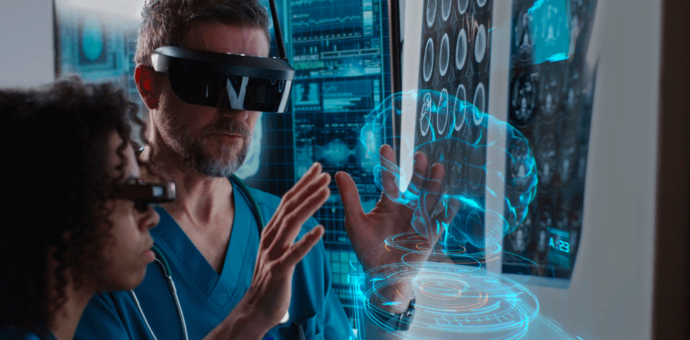Much has been said about the various opportunities created by the metaverse and the use of NFTs (non-fungible tokens), in the most varied segments. In healthcare and telemedicine, for example, the applications are considered promising.
With extended medical reality, students can simulate procedures and visualize details of the human body, doctors can perform surgeries remotely. In addition, even some treatments, such as physiotherapy for Parkinson’s patients, become feasible remotely.
The options are numerous – overlaying personalized patient data in holography, consulting 3D images in video libraries, evaluating image exams with high resolution, or making invasive procedures much more programmable. As a result, the perspective advances preventive and predictive medicine solutions.
NFTs ensure data authenticity and privacy
Besides medical applications, NFTs also stand out in this new metaverse perspective in healthcare. This is because they can become a secure option for storing tests and patient data, guaranteeing the confidentiality of information, just like a digital medical identity.
Tokens could be used in other situations, such as tracking hospital equipment and supplies, allowing medical institutions to control the entire supply chain better.
Innovations enable several medical breakthroughs
“Using augmented reality in the operating room is like having a GPS navigator in front of your eyes, because we don’t have to look at a separate screen to see the patient’s CT scan”, exemplified Timothy Witham, director of the Spinal Fusion Laboratory and professor of neurosurgery at Johns Hopkins University School of Medicine, one of the pioneers to use augmented reality in a surgical procedure (in June 2020).
Some Brazilian hospitals also already use specific applications, either to reassure patients (especially children), in the case of the Hospital das Clínicas da Faculdade de Medicina de Botucatu (HCFMB), or for surgical planning, as in the Hospital Alemão Oswaldo Cruz, in São Paulo, where some procedures are done under voice command.
Augmented reality or metaverse?
Despite its undeniable innovations, to what extent can augmented reality be considered a metaverse? In the view of some experts, the industry still needs to evolve to call it that.
For Timothy Witham, the metaverse may include options such as the remote simulation of procedures, proposing possible problems, with timing and monitoring of personalized vital signs (Virtual Surgical Planning). More than that: robots and avatars will participate in both the simulation and the actual surgery, controlling dozens of parameters that only intelligent machines can do.
“Metaverse is a network of active virtual environments in which people can interact with each other, or with digital objects while operating virtual representations of themselves (avatars)”, added Guilherme Hummel, coordinator of Hospitalar Hub, in an article. According to him, the metaverse should gain strength in the segment because several technology companies are launching equipment and infrastructure for medical professionals.







